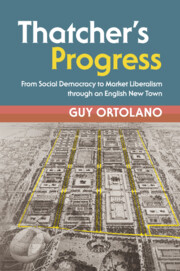3 - Architecture
Published online by Cambridge University Press: 08 June 2019
Summary
Chapter 3, “Architecture,” offers a historical explanation of aesthetic change. Commentators agree that architectural modernism had crested by 1980. But how could far-flung actors more-or-less simultaneously come to prefer, say, pitched roofs over flat ones? Rather than assuming that modernism’s end was natural or inevitable, this chapter recovers the process by which one set of forms displaced another. The analysis toggles between a macro account introducing the concept of welfare state modernism, and a micro account examining its fate in Milton Keynes. From the early 1970s, a new generation of architects arrived eager to renew their modernist inheritance. At the same time, building societies conveyed reluctance about offering mortgages to non-traditional houses. Since this policy threatened the corporation’s ability to sell its housing, a faction engineered a survey to undermine modernist features. By altering the criteria against which housing was judged, this survey resulted in instructions to future architects to design in neo-traditional styles. In this way, a public sector body born of the welfare state became enlisted in the project of eliminating welfare state modernism.
Keywords
- Type
- Chapter
- Information
- Thatcher's ProgressFrom Social Democracy to Market Liberalism through an English New Town, pp. 108 - 142Publisher: Cambridge University PressPrint publication year: 2019

